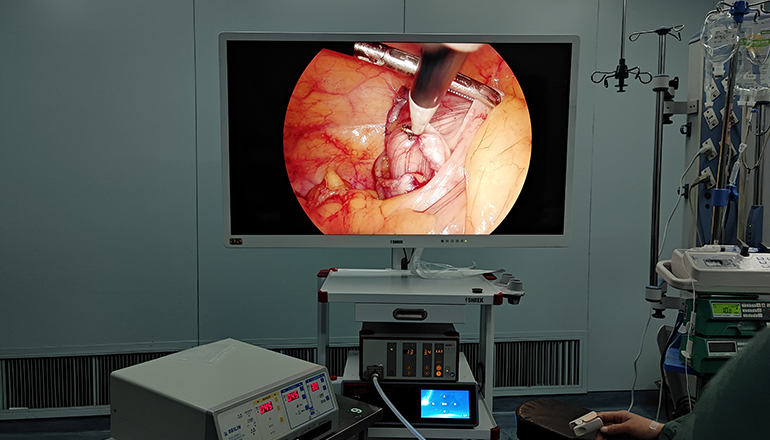- Shanghai, China
- [email protected]
- +86-21-58189111
Laparoscopic repair of gastroduodenal ulcer perforation is a minimally invasive surgical procedure used to treat a perforated ulcer in the stomach or duodenum. A perforated ulcer is a hole in the lining of the stomach or duodenum that can lead to leakage of stomach acid and other contents into the abdominal cavity, causing infection and inflammation.
Laparoscopic repair of gastroduodenal ulcer perforation involves making several small incisions in the abdomen, through which a laparoscope and other surgical instruments are inserted. The laparoscope allows the surgeon to see inside the abdomen and locate the perforation, while the surgical instruments are used to close the perforation and remove any infected tissue or debris. The incisions are then closed with sutures or surgical glue.
The procedure has several advantages over traditional open surgery, including smaller incisions, less bleeding, less pain, faster recovery time, and shorter hospital stays. The smaller incisions result in less scarring and reduced risk of infection. Laparoscopic repair also allows for earlier return to normal activities, with most patients able to resume their normal activities within a week.

The success rate of laparoscopic repair of gastroduodenal ulcer perforation is high, with a low rate of complications. However, there are some risks associated with the procedure, including bleeding, infection, and injury to nearby organs. In rare cases, conversion to open surgery may be necessary if the surgeon encounters complications during the procedure.
Laparoscopic repair of gastroduodenal ulcer perforation is generally performed under general anesthesia and takes approximately 60 to 90 minutes to complete. It is a safe and effective procedure that can be performed on patients of all ages, including elderly patients with comorbidities.
In conclusion, laparoscopic repair of gastroduodenal ulcer perforation is a minimally invasive surgical technique used to treat a perforated ulcer in the stomach or duodenum. It has several advantages over traditional open surgery, including smaller incisions, less bleeding, less pain, faster recovery time, and shorter hospital stays. The procedure is safe and effective and is commonly used to treat perforated ulcers. If you suspect you may have a perforated ulcer, it is important to seek medical attention immediately. Delay in the diagnosis and treatment of perforated ulcers can lead to serious complications such as sepsis, abscess formation, and even death.
If you have been diagnosed with a perforated ulcer, your surgeon will determine the most appropriate treatment plan based on your individual medical history and condition. In some cases, laparoscopic repair of gastroduodenal ulcer perforation may not be suitable for patients with severe medical conditions or advanced age.
It is important to follow your surgeon's instructions before and after the procedure to ensure a successful outcome. This may include fasting prior to the procedure, taking medication to prevent infection, and limiting physical activity for a period of time following the procedure.
Overall, laparoscopic repair of gastroduodenal ulcer perforation is a safe and effective surgical technique that offers several benefits over traditional open surgery. If you require treatment for a perforated ulcer, discuss the benefits and risks of laparoscopic surgery with your doctor to determine the most appropriate treatment plan for you.
Leave a Comments